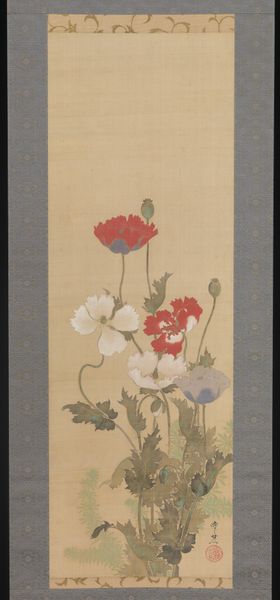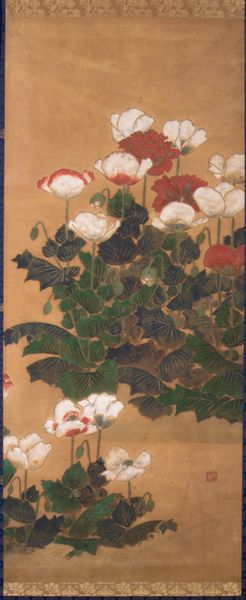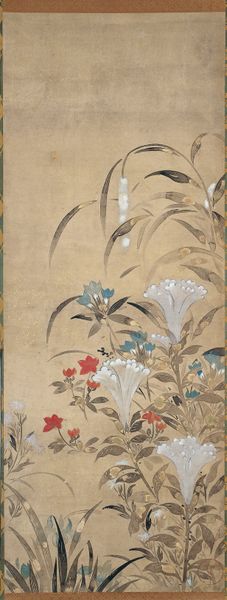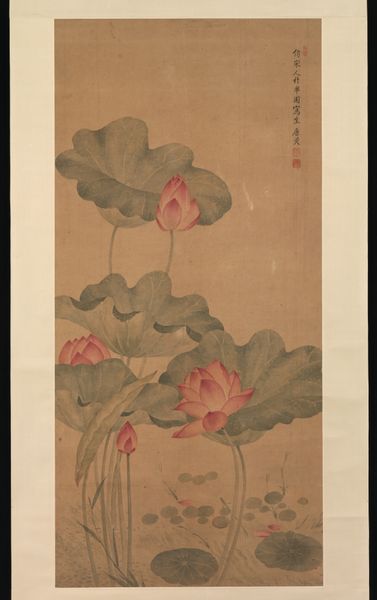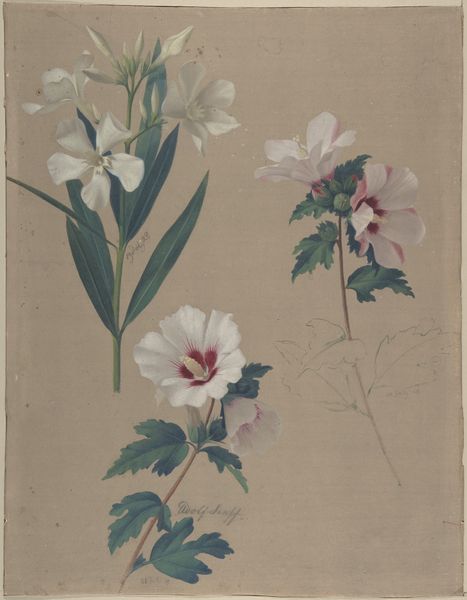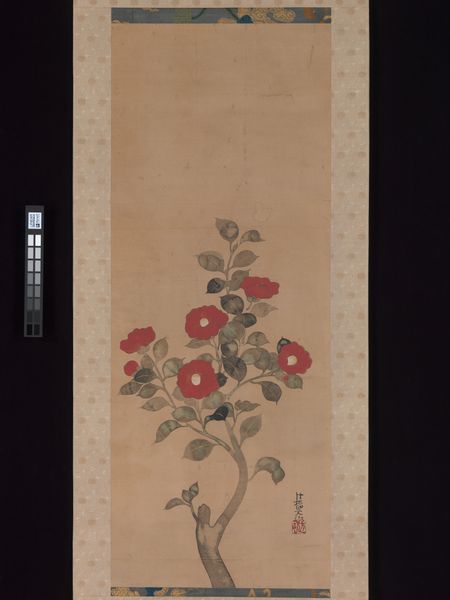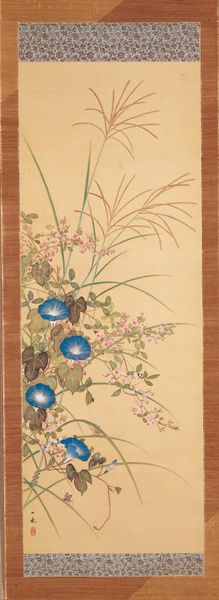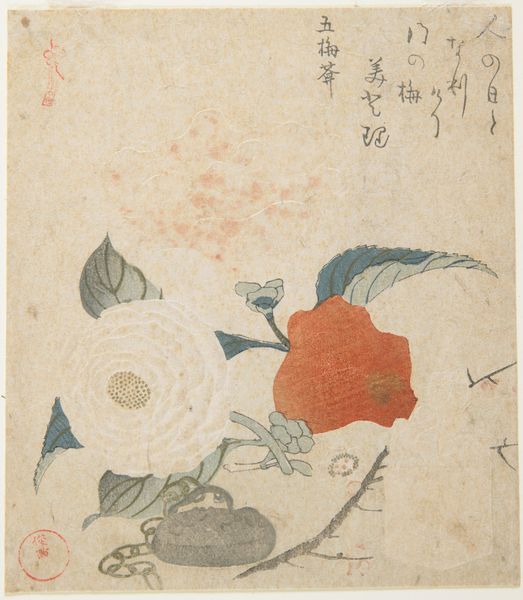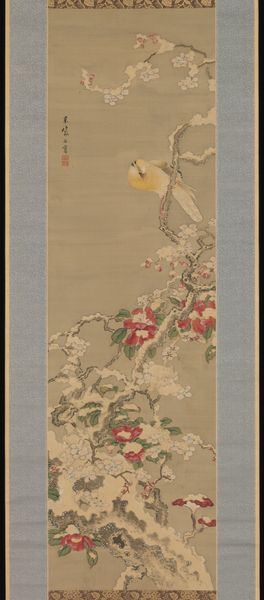
paper, watercolor, hanging-scroll, ink
#
water colours
#
asian-art
#
landscape
#
ukiyo-e
#
japan
#
paper
#
watercolor
#
hanging-scroll
#
ink
#
japanese
#
watercolor
Dimensions: 39 13/16 × 14 1/8 in. (101.12 × 35.88 cm) (image)73 1/4 × 18 13/16 in. (186.06 × 47.78 cm) (mount, without roller)
Copyright: Public Domain
Curator: What a strikingly simple, yet elegant composition. Editor: It feels calming, almost meditative. Are we looking at a work by Suzuki Kiitsu? Curator: Yes, this is his "Hollyhock and Lilies," a hanging scroll executed with ink and watercolor on paper around the 19th century. You can find it here at the Minneapolis Institute of Art. Editor: The execution is wonderful. The interplay between the vibrant reds of the hollyhock and the pristine whites of the lilies is really striking, all within a muted palette. Curator: Exactly. Notice how the artist meticulously renders each petal and leaf, while also imbuing them with a sense of naturalism, reflecting the influence of the Rinpa school's decorative style. How do you perceive Kiitsu's utilization of the hanging scroll format in presenting this flora? Editor: The scroll format forces you to view the piece in segments, moving your eyes vertically, almost mimicking the growth of the plants themselves. The flowers aren’t presented as just decorative; they're alive. Curator: I agree. Beyond the aesthetic appreciation, though, I see an artist deeply embedded within the socio-economic conditions of his time. The very materials - the ink, the paper, even the mounting fabrics - were products of complex trade networks and artisan workshops. Editor: True, but isn't the deliberate choice of the flowers themselves telling? The hollyhock, associated with the summer season, and the lily, with purity and remembrance. Could Kiitsu be weaving a subtle commentary here on the fleeting nature of beauty, a common theme in ukiyo-e? Curator: Possibly, yet their cultivation, too, suggests a connection to the imperial gardens or wealthy merchant patrons. The labor required to grow and display such plants would have been immense. Editor: Regardless, Kiitsu gives us something quite lovely. It has really resonated with me! Curator: And I’m left to consider the system that facilitated its creation. Thank you for the additional points.
Comments
minneapolisinstituteofart about 2 years ago
⋮
Suzuki Kiitsu was the best-known follower of Sakai Hōitsu. He carries on the Rinpa tradition here with a colorful summertime combination of white lilies and crimson camellias. Much of the linework used on the flowers leaves is executed in gold paint. The leaves also feature the trademark Rinpa painting technique known as tarashikomi, whereby additional pigments are applied atop other still-wet pigment and are allowed to bleed.
Join the conversation
Join millions of artists and users on Artera today and experience the ultimate creative platform.

